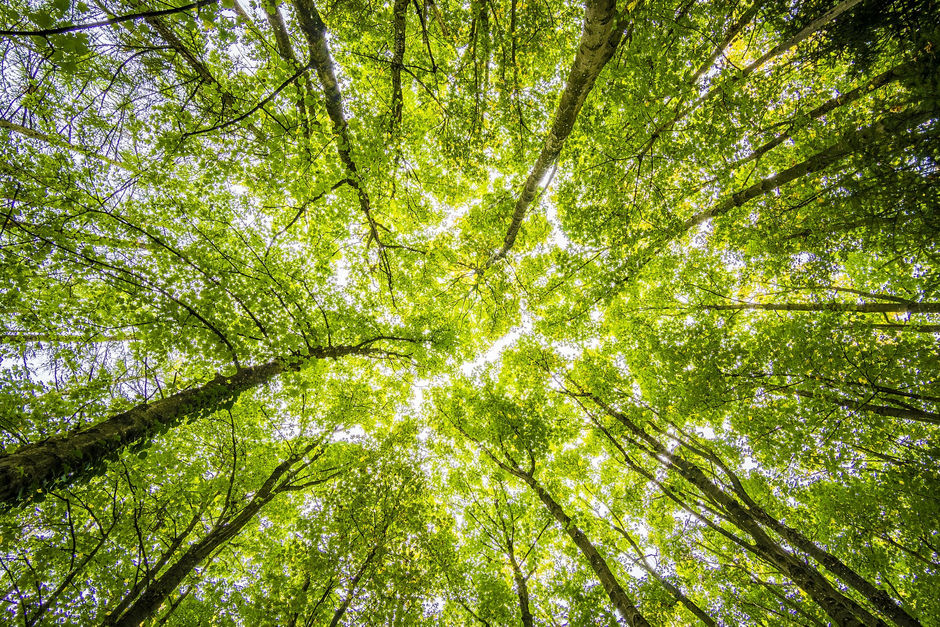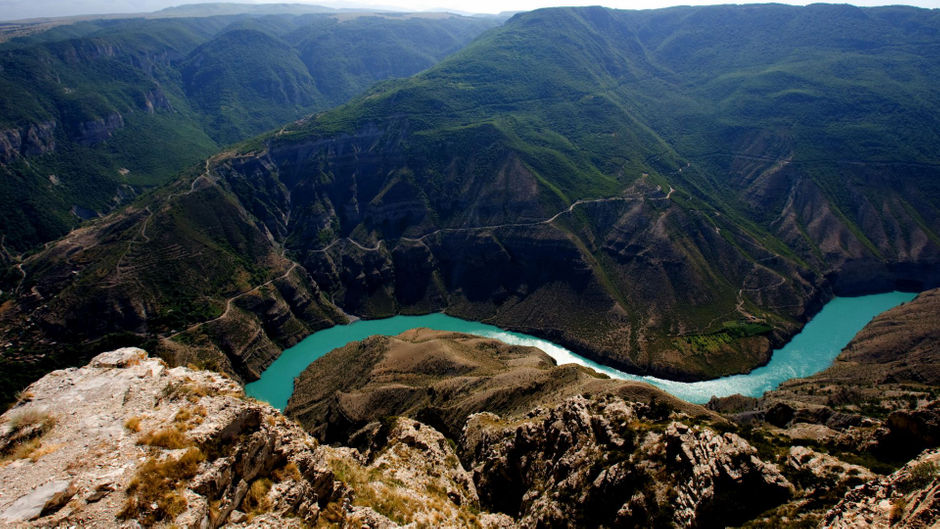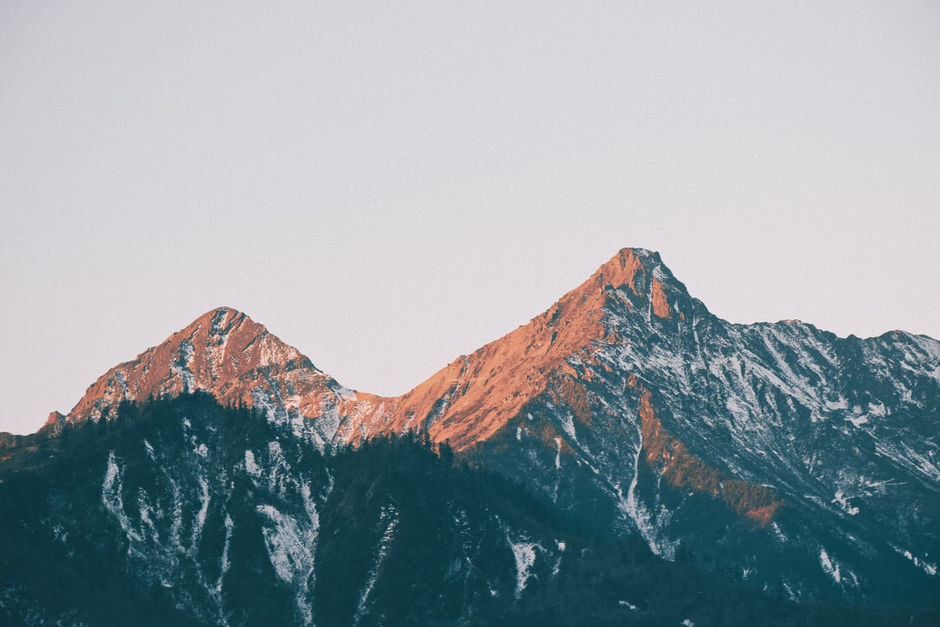Many thousands of years ago, a huge sand dune was formed on the territory of the Dagestan reserve, reaching a height of 262 meters and a length of 12 kilometers. The dune is constantly changing shape due to the wind. Sary-Kum is the highest sand dune in Europe and Russia.
The indigenous people have many legends, legends and tales associated with this place. Some believe that the sandy mountain was formed due to the fact that the giant shook the sand out of the boot.
At the foot of the dune there is a small visitor center, from which an eco-trail rises. In summer, sand can heat up to 60 ° C. Sary-kum is a miniature version of the Asian desert.
The local ecosystem includes many rare species of animals and plants. In addition to gerbils, turtles, snakes and lizards, solifugs, scorpions and a dangerous species of spiders - black widows - live here.
The indigenous people have many legends, legends and tales associated with this place. Some believe that the sandy mountain was formed due to the fact that the giant shook the sand out of the boot.
At the foot of the dune there is a small visitor center, from which an eco-trail rises. In summer, sand can heat up to 60 ° C. Sary-kum is a miniature version of the Asian desert.
The local ecosystem includes many rare species of animals and plants. In addition to gerbils, turtles, snakes and lizards, solifugs, scorpions and a dangerous species of spiders - black widows - live here.
Samur forest

The Samur forest is a unique natural monument, spread over the territory of the Samur National Reserve, in the south of Dagestan, in the region of the Samur River delta. Century oaks, Caucasian white beeches, alder, liana-like plants grow here. The undergrowth is rich in sea buckthorn, cherry plum, quince, hawthorn. In more humid places, shoots of wild grapes twine around tree trunks, hops and blackberries grow. Some lianas remain green all year round, which is considered the main feature of the Samur forest. The silence and mysterious atmosphere of this place suggest that there is no one for many kilometers, but forest paths lead to noisy waterfalls, where tourists always crowd.
Agrakhan Gulf
The Agrakhan Gulf on the Caspian coast is separated from the open sea by the peninsula of the same name, also known as Utshkosa. The bay is about 40 kilometers long and 8 kilometers wide. Due to the deposition of river silts and the fall in the level of the Caspian Sea, the area of the bay steadily decreased until the 1980s. The opposite process is now observed.
Vegetation in these places is rare, but you can even find relics of the Ice Age. The fauna is inhabited by black-and-white storks, swans, pelicans, beautiful flamingos, and haigruds. The area is also popular with bird migrations (about 200 species).

Sulak

Sulak canyonThe canyon of the most powerful water artery of Dagestan - Sulak - is the deepest in Europe, it is sometimes called the "Grand Canyon of Russia". The gorge begins at the source of the river and separates the Sala-tau and Gimrin ranges in the north. With its grandeur, the Sulak Gorge resembles the North American Grand Canyon, but it is 60 m deeper and is 1920 m.A pure turquoise river meanders along the bottom of the canyon, along which vacationers take boat trips among the picturesque rock walls on a boat
Not far from Sulak there are majestic mountains and the village of Untsukul, famous for its wood craftsmen. Here you will have the opportunity to purchase amazing handicrafts made of wood and take a master class.

Saltinsky waterfall is unique in that it is an underground and one of a kind waterfall in Dagestan. The hydrological object is a monument of republican significance and is located in the Gubninsky region, on the outskirts of the village of Salta. You can view this picturesque waterfall only after passing a narrow and winding gorge half a kilometer long. The walls of the canyon are so high that they form a kind of cave. It is almost impossible to see where the water is falling from. On a sunny day, the rays reflecting off the lake create striking patterns on the rocks.
The recommended time to visit is spring, the period of high water. In especially dry years, the waterfall dries up. In winter, a bizarre cascade of frozen icicles forms here, the cave looks like an ice palace.

Mount Bazarduzu is the highest point in Dagestan, as already mentioned. The height of Bazarduzu is 4466 m. It is located in the southern part of Dagestan, and its glaciers give rise to many rivers, including the Samur, which carry its waters along picturesque slopes with stunning alpine grasses.
From April to September, these places are used as pastures, where the locals graze flocks of sheep and goats of many thousands. Of the wild animals, mountain goats are widespread. Among the most famous balneological and health resorts in Dagestan, which can be safely called the most beautiful locations.

Not far from Sulak there are majestic mountains and the village of Untsukul, famous for its wood craftsmen. Here you will have the opportunity to purchase amazing handicrafts made of wood and take a master class.
Saltinsky waterfall

The recommended time to visit is spring, the period of high water. In especially dry years, the waterfall dries up. In winter, a bizarre cascade of frozen icicles forms here, the cave looks like an ice palace.
Mount Bazarduzu

Mount Bazarduzu is the highest point in Dagestan, as already mentioned. The height of Bazarduzu is 4466 m. It is located in the southern part of Dagestan, and its glaciers give rise to many rivers, including the Samur, which carry its waters along picturesque slopes with stunning alpine grasses.
From April to September, these places are used as pastures, where the locals graze flocks of sheep and goats of many thousands. Of the wild animals, mountain goats are widespread. Among the most famous balneological and health resorts in Dagestan, which can be safely called the most beautiful locations.
Akhty

Akhty is the oldest and largest alpine village in the republic. Until recently, there was not even a road there. The aul is located on the left bank of the Akhtychay River. Clean alpine air in combination with bicarbonate-sodium mineral waters help in the treatment of rheumatism in children and adults, joint diseases, problems with the musculoskeletal system and the nervous system. The temperature of the 7 hot springs can reach 70 degrees. The village has preserved in excellent condition amazing ancient baths with huge domes and figured ventilation windows. The baths are located so that the water in the baths comes from the thermal springs. Thus, most of the premises do not even need to be heated in winter.
Kayakent on the banks of the Gamri-Ozen riverKayakent on the banks of the Gamri-Ozen River is famous for its curative mud, hydrogen sulfide, hydrosulfite and hydrocarbonate-chloride-sulfate waters used to treat cardiovascular and nervous systems, musculoskeletal system, gynecological ailments, skin problems. The water temperature is kept at values from 38 to 43 degrees.

Kayakent on the banks of the Gamri-Ozen riverKayakent on the banks of the Gamri-Ozen River is famous for its curative mud, hydrogen sulfide, hydrosulfite and hydrocarbonate-chloride-sulfate waters used to treat cardiovascular and nervous systems, musculoskeletal system, gynecological ailments, skin problems. The water temperature is kept at values from 38 to 43 degrees.
Manas

ManasManas is a resort on the shores of the Caspian Sea, 50 km from Makhachkala. Iodine-bromine waters heal skin, musculoskeletal, gynecological, neurological diseases. The recommended time to visit is autumn, as there is little rainfall and no gusty winds.


